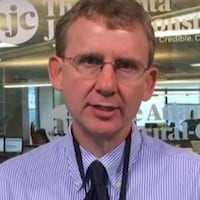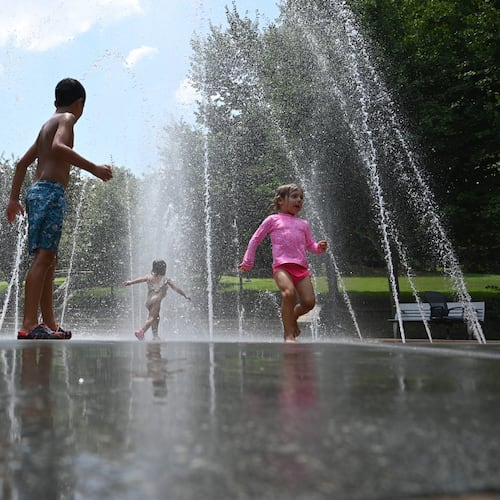Developers have asked Gwinnett County for permission to scale back a large commercial center at Coolray Field and build more apartments instead, altering a concept county officials used to justify spending $64 million on the baseball stadium.
Plans for property surrounding the Lawrenceville stadium, built to lure an Atlanta Braves minor league team from Richmond, originally called for 351,000 square feet of commercial space and 610 upscale residential units. New plans call for 186,000 commercial square feet and 886 apartments.
That would mean the loss of nearly a Walmart Supercenter’s worth of commercial space at the stadium site. The property also would lose 150 hotel rooms, a 50 percent reduction.
Nearby residents and some county officials are not happy. They say the original development plans were a key selling point when county officials agreed in 2008 to build the stadium for the Gwinnett Braves.
“It was going to be a mixed-use, live-work-play compliment to the stadium,” said Paula Hastings, a former planning commissioner who organized a neighborhood meeting last week. “This is basically becoming `apartment city.’ That’s just not the standard they proposed to the community.”
The Municipal-Gwinnett County Planning Commission will consider the plan revisions Wednesday.
Marty Orr, one of two developers seeking county approval of revised plans, said the original vision for the property was never realistic.
“The [original] plan was a beautiful plan,” Orr said. “But so far none of it has ever been built, except for the Gwinnett Braves stadium.”
If Gwinnett officials grant the changes in zoning conditions needed to revise development, it wouldn’t be the first time the stadium project failed to live up to its billing.
The Gwinnett Board of Commissioners approved spending $45 million to buy land on Buford Drive for the stadium, borrowing $33 million and pledging various stadium-related revenue sources to repay the debt.
Commissioners assured residents the stadium would pay for itself and spark economic development nearby. But they later approved a new 3 percent car rental tax that is the single biggest source of money to repay the debt, and the cost escalated to $64 million. The county is still struggling to find money to pay the stadium debt. Last September an Atlanta Journal-Constitution investigation found Gwinnett plans to begin using hotel-motel tax revenue to help make debt payments as soon as this year.
Game attendance also hasn't lived up to expectations. A consultant estimated the team would average 6,000 to 6,500 fans a game after an initial "honeymoon" period in which attendance might be higher. The 10,427-seat stadium drew an average of 5,858 fans a game in its first year and 5,095 per game last year.
The stadium, which opened during the recession, also hasn’t been the economic development engine advocates predicted. Developer Brand Morgan, who sold Gwinnett the stadium land, built upscale apartments adjacent to the stadium in 2009. But his plans for a massive retail, office and residential complex on 73 acres surrounding Coolray Field have not come to pass.
Morgan said the poor real estate market has hindered his efforts to buy and develop all of the property as planned.
Morgan owns about 54 acres of the property, while Orr has a contract to buy the other 19 acres.
Morgan wants to build 674 residential units on his property – an increase of 64 – and scale back the commercial component. He already has requested a building permit for 248 apartments that would be financed by the federal Department of Housing and Urban Development. But Morgan said they will not be government subsidized and will carry the highest rents in the area – $1,200 for a two-bedroom apartment, for example.
Morgan’s plans still include 617,000 square feet of office space and 142,000 square feet of commercial space. He said it would be “the nicest thing that’s been built in Gwinnett County in 10 years.”
Orr would replace most of the commercial buildings on his property with 212 apartments. His new plans call for 44,000 square feet of commercial space along Buford Drive, including a car wash, fast-food restaurant, auto parts store and general retail shops.
Morgan said he is trying to keep his property as close to the original vision as possible. He said he's only changing his plans because he can't follow through on his original proposal without the 19 acres he doesn't own.
Orr said he’s trying to develop something that “actually works and actually gets built.”
Local residents aren’t buying those arguments. On Wednesday night at the Brook Forest subdivision clubhouse, more than 40 people quizzed Orr about his plans and said they like the original proposal, which they likened to Suwanee’s Town Center and Atlanta’s Atlantic Station.
“This is just strip retail on Highway 20 with apartments crammed in behind,” said Westover subdivision resident Steve Piefke, referring to Orr’s plans. “There is nothing positive to this area about that development.”
Hastings said Gwinnett taxpayers paid for the stadium and county officials should protect that investment.
"This is what they sold us," she said, holding the artist's renderings of Morgan's original plan.
Some planning commissioners also aren’t happy. Chairman Chuck Warbington, who approved the original plans, said commissioners might consider changes in zoning conditions that would strengthen – rather than erode – the original vision.
Warbington said a shift from commercial to residential could cost the county tax revenue. But he said his biggest concern is the quality of the development. He said Gwinnett taxpayers deserve a return on their stadium investment and should get the kind of development originally promised, “not broken-up HUD-financed apartment complexes.”
Unmatched coverage
The Atlanta Journal-Constitution has been investigating claims about the public benefits of the Gwinnett Braves stadium since Gwinnett County officials unveiled the project in 2008. Although Gwinnett officials vowed the stadium would pay for itself, last September we reported the county is still struggling to find money to repay the $33 million stadium debt.
About the Author
The Latest
Featured


